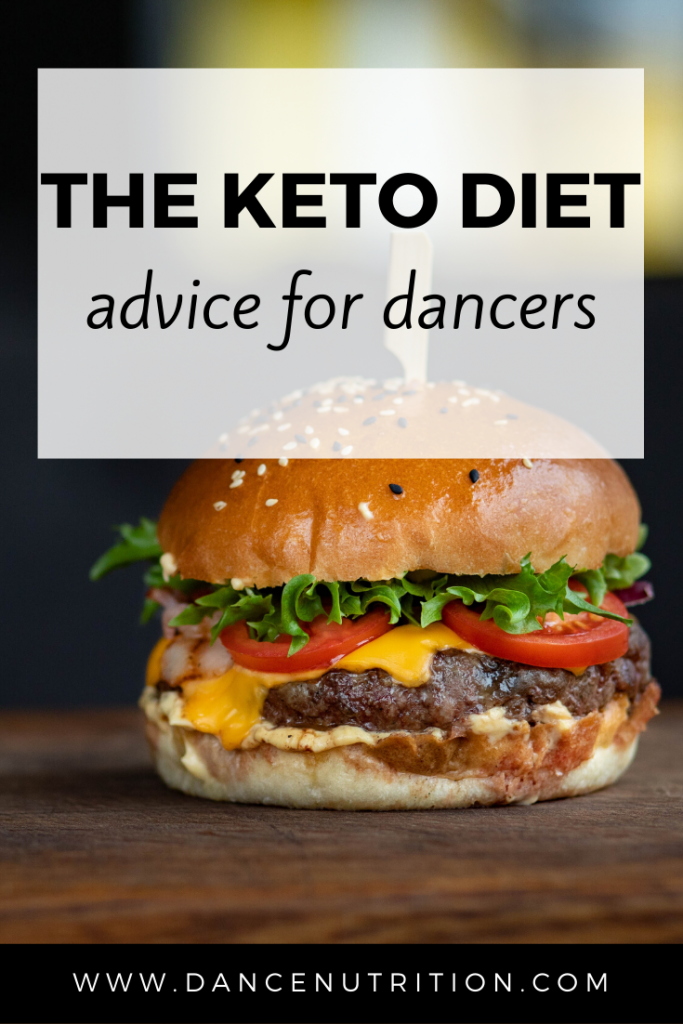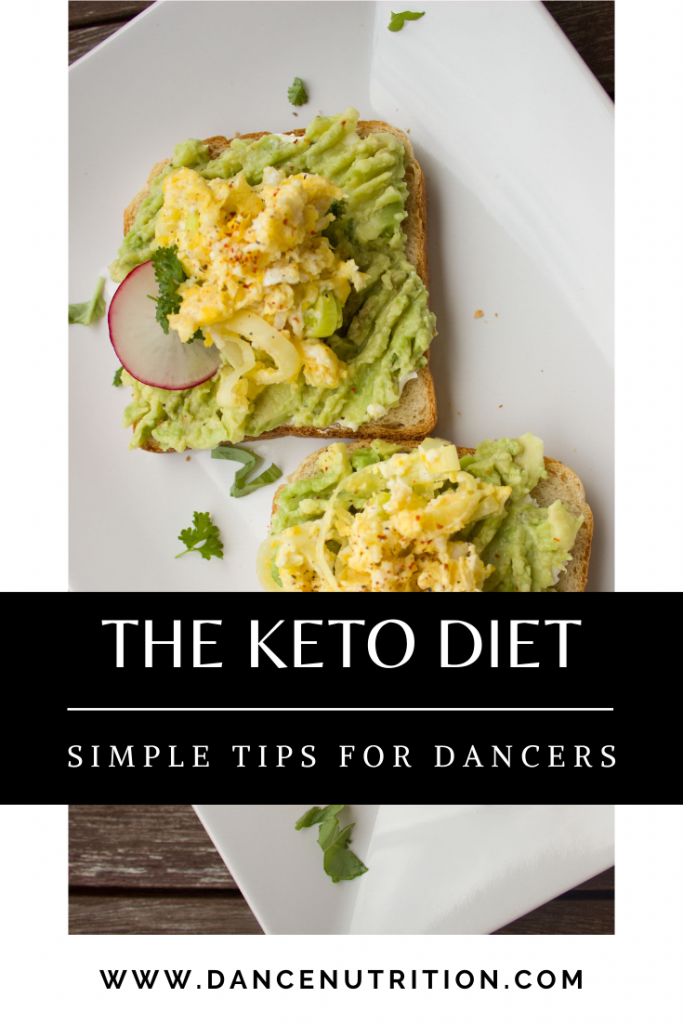Dear Rachel, my family has decided to try the keto diet. They’ve lost weight and even feel more energized. What are your thoughts about dancers going keto?
What Does It Mean To “Go Keto?”
The keto diet represents a low carb/high-fat diet where fat makes up more than 75% of one’s total daily calories. The goal of the diet is to put your body in a state of ketosis.
What Is Ketosis?
Under normal conditions, your body burns both carbohydrates and fat for energy. Metabolically, your body prefers carbohydrates as a primary fuel source for red blood cells, brain functioning, and the nervous system. When it comes to metabolism, it’s more efficient for your body to burn carbohydrates than fat. In regards to your physical activity, your body will burn both carbs and fat at differing ratios depending on factors like the duration, speed, and intensity of your workout.
Your body also stores both carbohydrates and fat for energy at later times (such as during sleep). Glycogen, which is the storage form of carbohydrates, is depleted quickly throughout the day. Fat, on the other hand, is compact enough for the body to store in larger quantities. As a result, your body prefers to store fat. This is a primitive means of human survival. Case in point(e): your body is biologically equipped to burn carbohydrates for fuel and store fat for the long term.
When in a state of ketosis, there isn’t enough carbohydrate to burn. Therefore, the body uses fatty acids (derivatives from the breakdown of fat) and amino acids (derivatives from the breakdown of protein) to fuel these processes.
Sounds like I’ll burn more fat! I’m In!
For avid keto-fans and those on the sidelines, there’s a misconception that reducing one’s carb intake will magically flip the switch of your body’s metabolic burn from carbs to fat. Yes, your body will burn more fat if the majority of your day’s calories are coming from fatty foods. However, this increase is accompanied by a subsequent increase in fat stores. From a body composition standpoint, dancers should aim to modestly build muscle as a means to support high-impact strength demands. If the majority of your calories are coming from fat then you risk limiting your intake of muscle-building protein.
Additionally, the byproducts produced from carbohydrate metabolism are needed for fat metabolism- the two go hand-in-hand! This is why we say: fat burns in the flame of carbohydrates. Now, this doesn’t mean that your body will never burn fat. In fact, the more trained you are as a dancer and/or as an athlete, the more your body is able to kick into those fat stores for energy. However, you’ll still want to supply your movement with carbohydrates in order to prevent early-onset fatigue.
But if you’re still considering keto for your body and/or performance goals, here are a few more points to consider…
You’ll Feel Sluggish
Once you start running low on fuel derived from carbs (AKA glycogen) then you’ll limit your performance potential. Intense exercise depends on your muscle glycogen for fast-action energy. Without it, you’ll have a higher perception of effort while dancing. Point(e) blank: petite allegro will be MUCH HARDER to get through!
Your Digestive Health Will Go South
Not only does the keto diet limit protein, but the omittance of carbohydrates often equates to a diet low in fiber. Fiber, which is a functional component of most carb-based plant foods, plays a major role in our digestive health. For many, suddenly giving up carbs means giving up quality sources of fiber like fruits and whole grains. These play a role in regulating digestion, preventing constipation, and reducing the instance of diarrhea.
You’ll Miss Out on Key Micronutrients
The dietary restrictions from a keto diet also risk low intakes of key nutrients like vitamin C, A, E, K, folate, selenium, and potassium. Many of which come from many carb-filled plant foods. Your intake of immune-boosting phytonutrients and antioxidants is also heavily dependent on colorful fruits and starchy vegetables, many of which are omitted on a keto diet.
The Verdict
There’s no doubt that fat is an essential macronutrient, promoting satiety at mealtime and satisfaction long term. Fat also plays an important role in hormone production, vitamin transport, vitamin absorption, and even in building strong bones! But in regards to high-fat diets, any evidential benefits of manipulating a state of ketosis is limited to specific populations like those with drug-resistant epilepsy and Alzheimer’s disease.
Incorporate a source of fat at every meal, but don’t forget about the other key players on your plate: carbohydrates and protein. Meals and snacks should be a balance among these 3 superstar macronutrients: complex carbs, unsaturated fats, and lean protein.




